What are dried flowers for floristry and how to collect a bouquet from them?
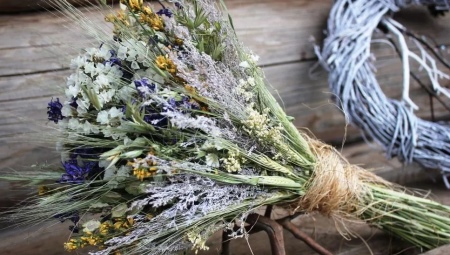
A huge advantage of dried flowers in floristry is the ability to use them, regardless of the season. We must not forget that the resulting bouquets and compositions retain their aesthetics for more than a year.
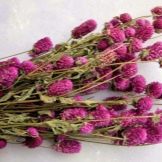
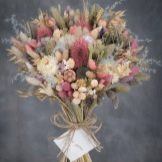

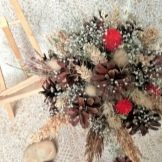
Peculiarities
Dried flowers for floristry, also known as immortelles, are plants that maintain an attractive appearance even after the end of their life cycle. Some of them remain with their original shape and color, and some still fade, but do not lose their decorative effect.
Their durability is provided by filmy wrappers of inflorescences or receptacle scales.
It needs to be made clear that to create floristic compositions, not only buds and open flowers are involved, but also seed pods and fruits. Despite the durability of dried flowers, at home and without additional processing, they remain unchanged for no more than a year. Most of them do not create any inconvenience even at the stage of cultivation, differing in strong immunity, drought resistance and photophilia.
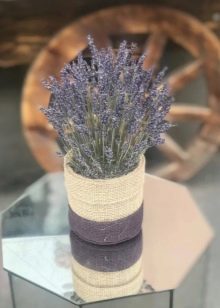
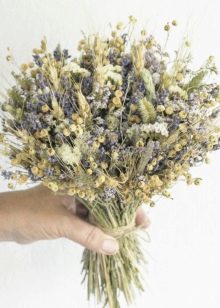

Varieties
In bouquets of dried flowers, most often there are a variety of flowers, field and garden, cereals, reed twigs, sedges, ferns and reeds. Compositions with shrub branches dried together with berries are interesting.
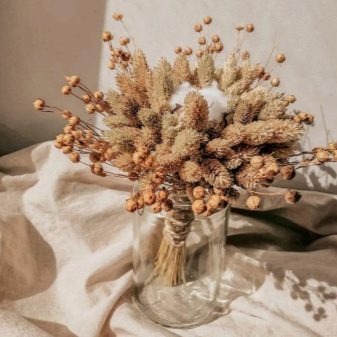

For example, gelichrizum or immortelle is usually used for winter bouquets. Its inflorescences of orange, pink or yellow color do not lose their bright color throughout the entire cold period. Among florists such a name as Lunaria is widely known.This plant shows decorativeness only after flowering and ripening of fruits: the elimination of external valves is accompanied by a demonstration of graceful silvery partitions that adorn any floristic composition.
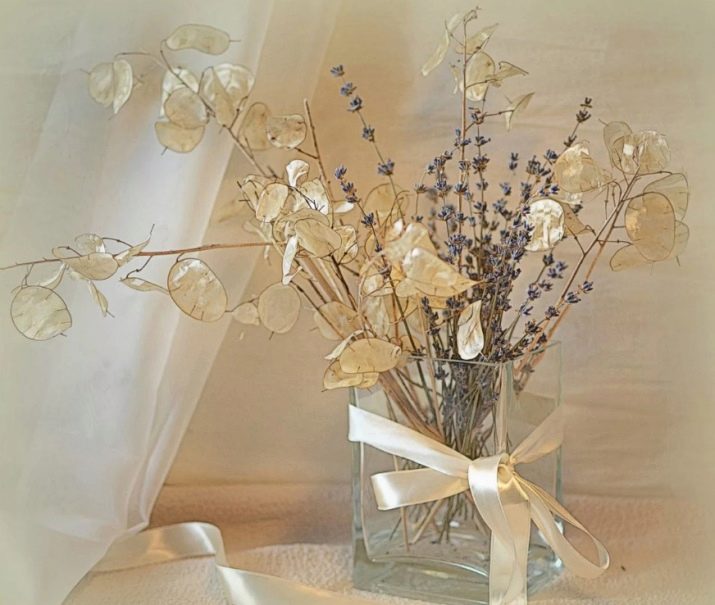
Bright armeria looks very attractive during flowering, but after the end of its life cycle, it retains a red, pinkish, white or purple color of the buds. Astilba is also popular, which does not possess particular brightness, but is ideal for laconic and minimalistic bouquets. Many florists are attracted by yarrow - after flowering, its flower heads can be easily restored by covering with gouache or acrylic dyes. Physalis looks very cool, famous for its unusually curved stems and "boxes" of fruits. Among the cereals, it is necessary to mention the haretail or lagurus, miscanthus, blue thistle, reed grass and pike.
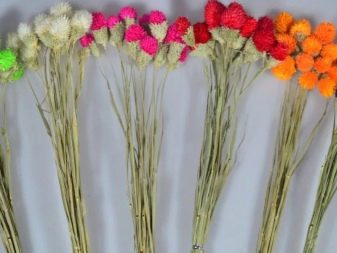
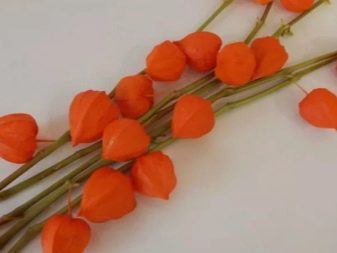
Gypsophila paniculata is the most common in floristry. It consists of several thin shoots, ending in either tiny white or double or pink flowers. Kermeks are annual grasses with buds collected in panicles or shields, and can be colored white-pink, yellow, blue or even lilac shades. Florists actively cultivate spherical craspedia with round yellow inflorescences, common mordovia with thorny leaves and spectacular tall erythematosus. Even a bow can become a decoration of a bouquet, or rather, its decorative variety with globular inflorescences of blue, lilac or purple tones.
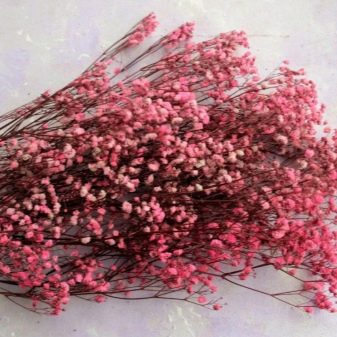
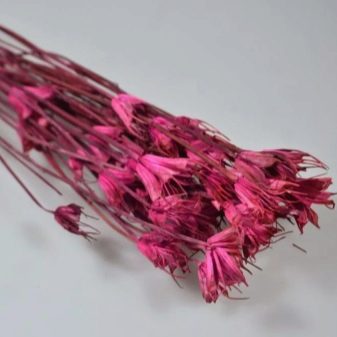
How to grow dried flowers?
Perennials that are to become dried flowers are usually not afraid of the cold and do not require additional shelter in winter. The main care for them lies in the demi-season processing of the bush, as well as, if necessary, dividing it.
It is customary to plant annual seeds directly on the garden bed in late spring. The specificity of caring for them is determined based on the type and variety of the plant.
Future dried flowers are cut before they have fully bloomed, ideally in mid-bloom. This solution allows you to maximize the preservation of the pigment present in the stem and corolla. However, cutting can be carried out at other stages of the crop life cycle from budding to seed ripening - the main thing is that this happens in dry and sunny weather.
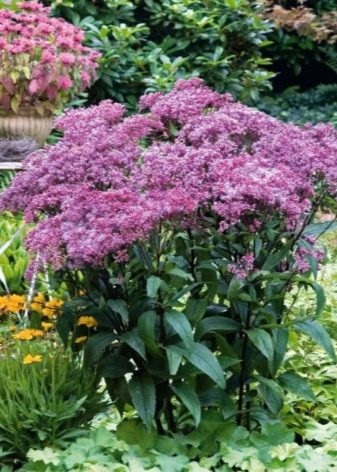
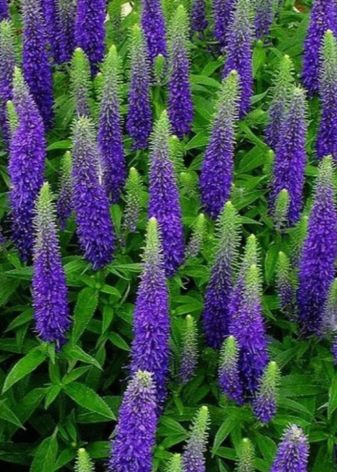
Some experts insist that flowers should be cut around noon. It is extremely important that there is no watering the day before, and the culture can dry out as much as possible. Flowers without dew drops should also be chosen. Plants will also have to be dried by tying them in small bunches and fixing them with inflorescences down in a place where the sun's rays do not penetrate - for example, in a pantry or closet. It is also important to arrange for them to be constantly ventilated. Drying of dried flowers should be continued for 20 days.
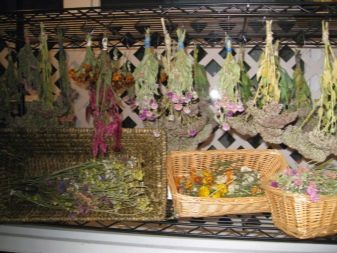
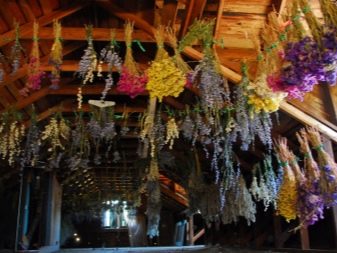
How to make bouquets with your own hands?
The use of dried flowers makes it possible to compose a composition for any celebration: gift bouquets, Christmas wreaths and garlands, a bridal bouquet, decorative elements for the interior and everyday compositions.

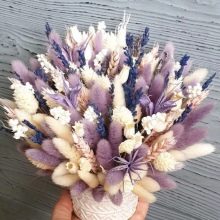
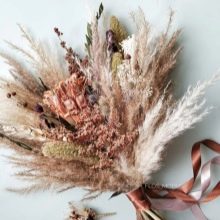
A master class for beginners on creating a classic bouquet will require the use of any dried flowers, scissors, ribbon or twine, as well as spray varnish. Before collecting immortelles in a bouquet, it is recommended to decide on a vase or pot of the required size. After assembly, the excess parts of the stems are cut off, and the remaining parts are tightly tied with twine. For the longest possible preservation of the bouquet, it is varnished.
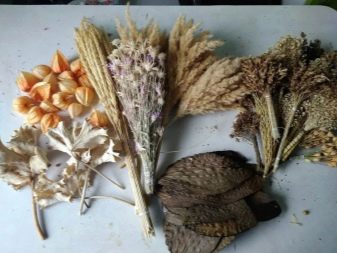
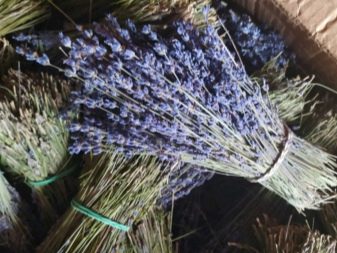
It is relatively simple to make a composition in a pot. Its compilation will require the use of a small but beautiful container, dried flowers, scissors, decorative pebbles, moss or sisal, plaster and varnish. First of all, the diluted gypsum is poured into the vessel so that about 2 centimeters remain to its edges.The stems of the immortelle are trimmed and immediately immersed in a moist substance. The voids are masked with pebbles, moss and sisal, and this must also be done before the gypsum hardens. If desired, the pot is tied with lace or decorated with rhinestones, after which the entire product is varnished.
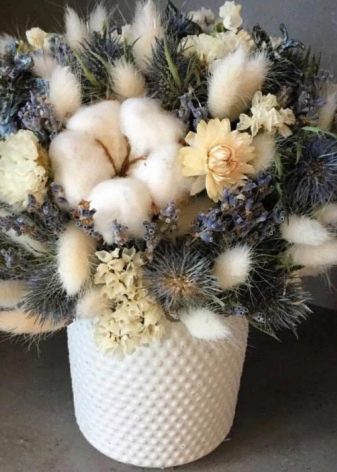
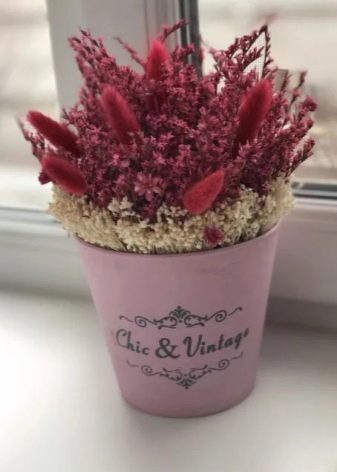
An autumn composition with a floral sponge base is ideal for a teacher's gift to school. To follow the master class step by step, you should start by preparing scissors, piaflore and dried flowers. A mug, basket, original vase, deep plate or something similar is suitable as a container for the composition. From the immortels, it is necessary to prepare heather, rudbeckia, haretail, gelichrizum, or any other plants you like. First of all, the piaflore sponge is cut to the size and shape of the bouquet container.
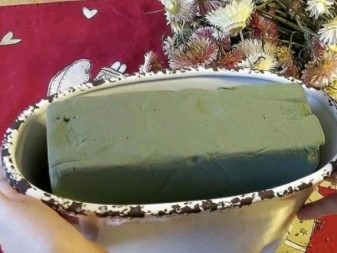
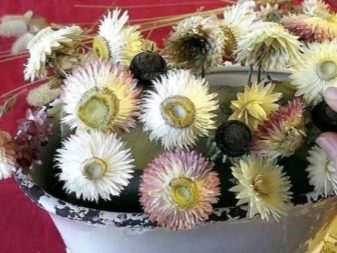
Further, it is gradually filled with dried flowers, and, if desired, with fresh flowers. According to the rules, one should start with the largest specimens - gelichrizum, and then, when they are evenly distributed over the surface, move on to rudbeckia in contrasting colors. By adding vertical accents and masking the remaining areas with heather twigs, you can decorate the composition with a fluffy hare tail. It is important to insert them carefully so as not to break fragile stems, and also to make sure that they are above the rest of the composition.
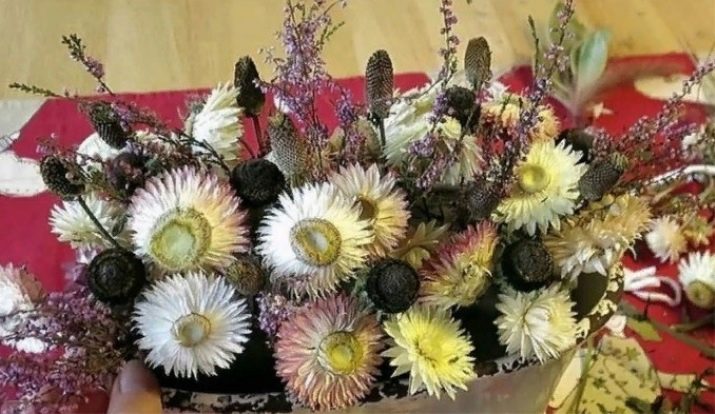
The composition in the hat box looks really luxurious. To create it, you will need to use a bunch of dry lavender, a bunch of lagurus in blue, pink and beige tones, a bunch of peach-colored brome bloom, as well as 7 sprigs of cotton and immortelle. In addition, you will have to prepare scissors, a spool of gray thread, a gun with silicone glue and a hat box with a diameter of about 16 centimeters. First of all, the threads are cut into 7 fragments about 10-15 centimeters long. Further, the existing immortelles are used to form flower tufts.
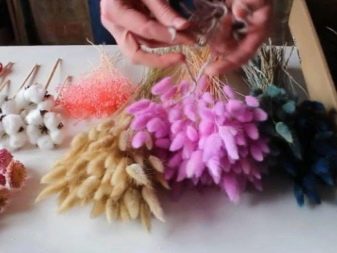
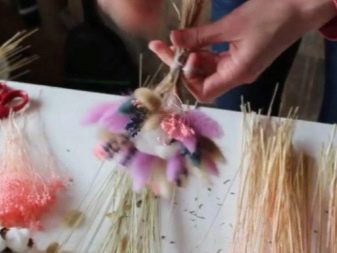
This is done as follows: three branches of lagurus of each color are distributed around the cotton. It is best to alternate between them and make sure that all the gaps are filled. Next, sprigs of lavender and delicate brome bloom are added to each bunch. Each mini-bouquet is fixed in its lower part with a gray thread. When all 7 blanks are ready, they will need to be assembled into a single bouquet. One of them becomes the center, then another is added to it, and the gap is filled with an immortelle flower. All other blanks are applied to them in a spiral, also with the addition of immortelle.
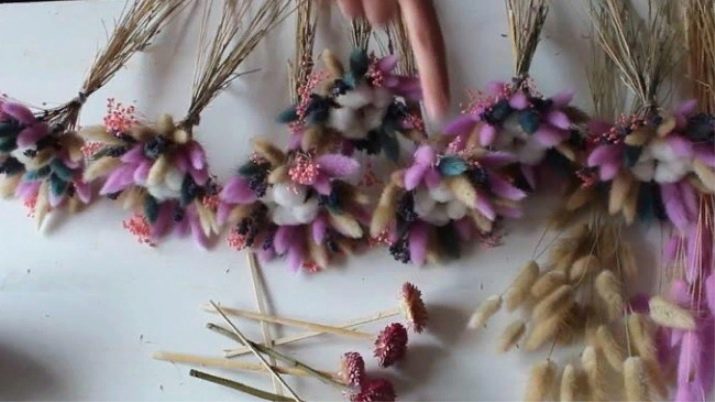
The finished bouquet is getting better, leveled and tied tightly with a gray thread. For more opulence, empty spaces around the edges can be filled with lagurus. The ends are trimmed at the stems and the composition is fixed in the hatbox with silicone glue.

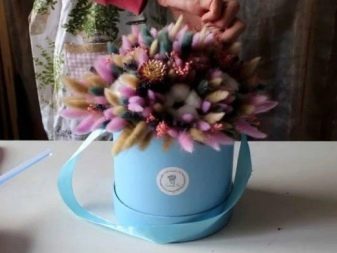
A floristic composition placed inside a chicken shell will become an original souvenir. In addition to the egg, you will have to prepare a piaflor sponge, a thick needle, a knife and pruning shears, a bright glass, and any dried flowers. It should be mentioned that instead of the latter, fresh buds can also be used - for example, buttercup, freesia and hyacinth. The process itself is carried out quite quickly: the egg is pierced with a needle and freed from the contents, after which its top is gently broken. It is important that at least half of the shell or a little more remains intact. It is not necessary to correct uneven edges, they will become the highlight of the craft.
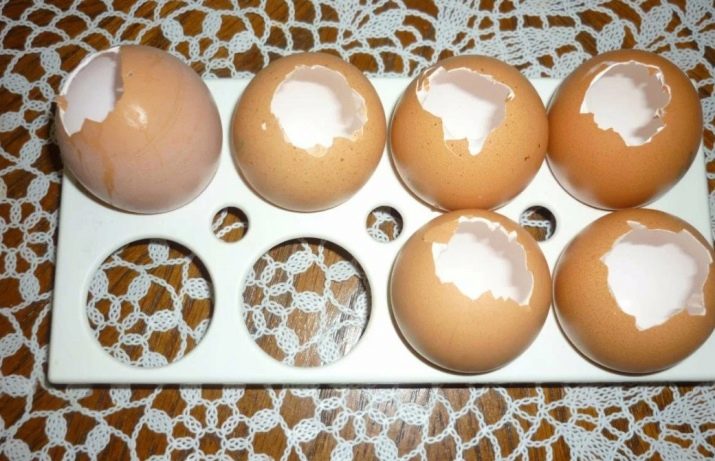
The egg is placed in a glass, and then filled with a floral sponge, cut to its size. Upon completion, dried flowers are carefully inserted into the piaflor.

An interesting master class on creating a bouquet of dried flowers can be seen in the next video.






